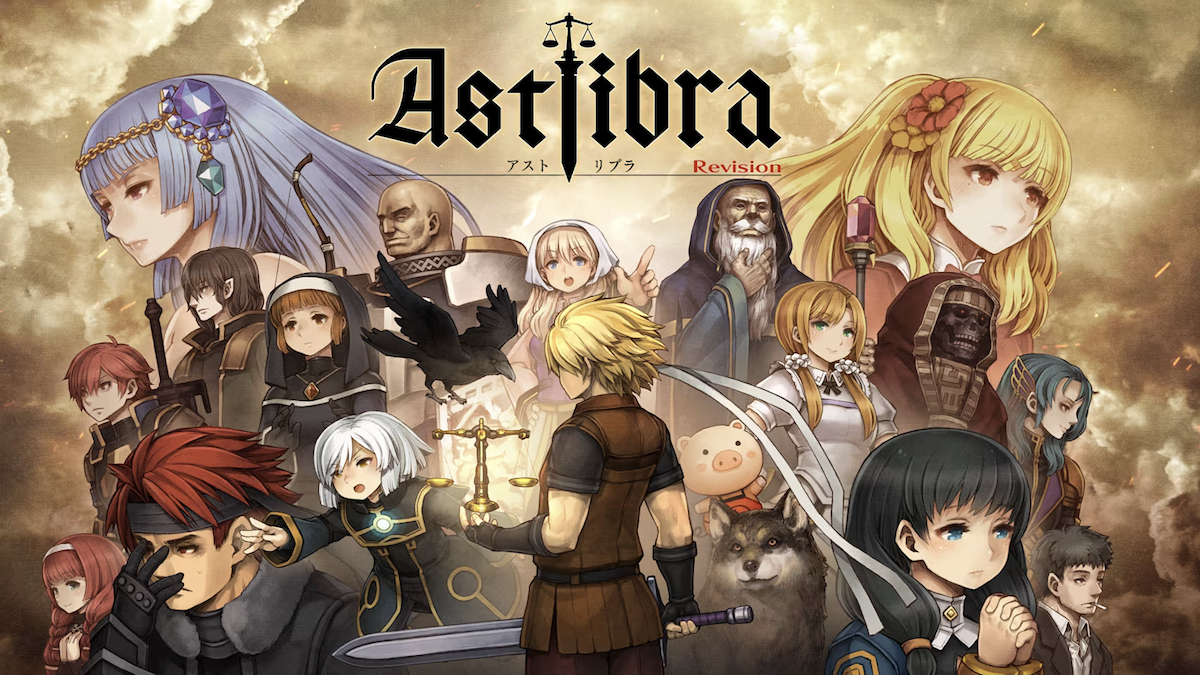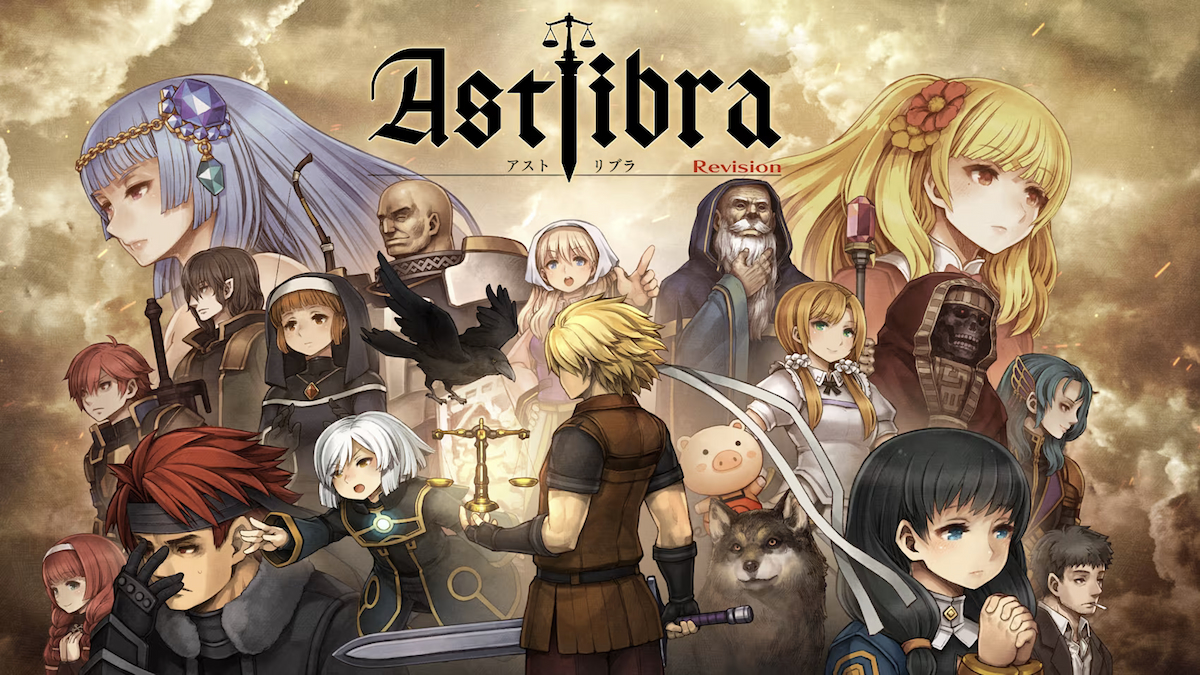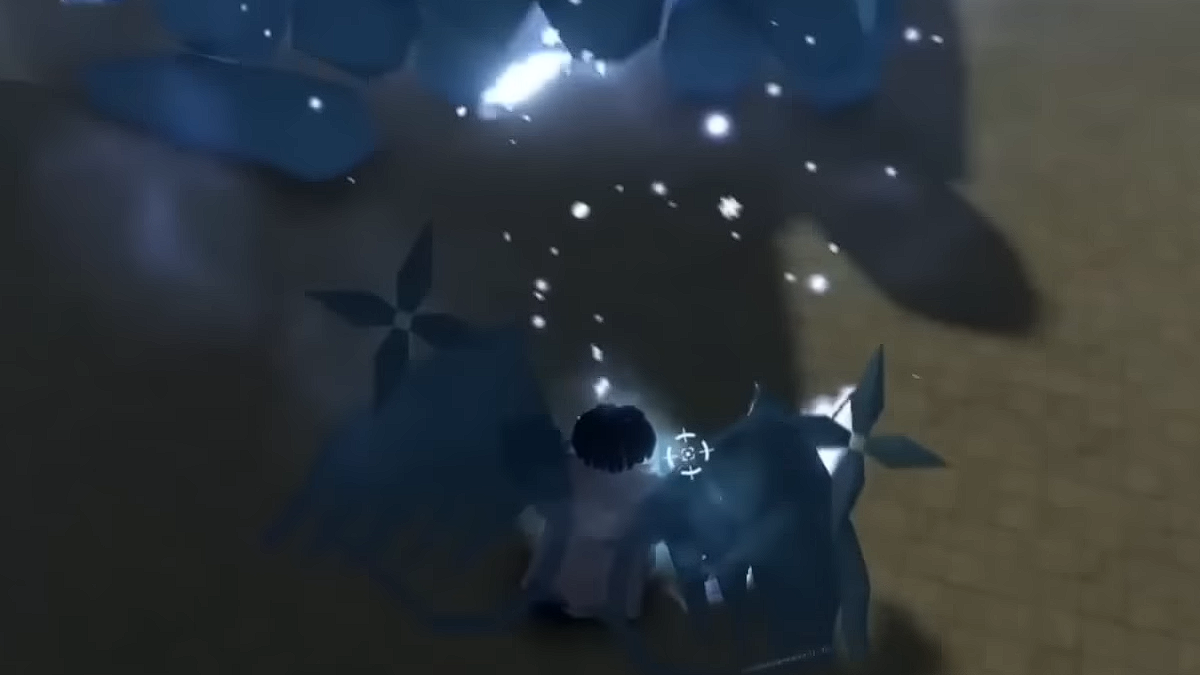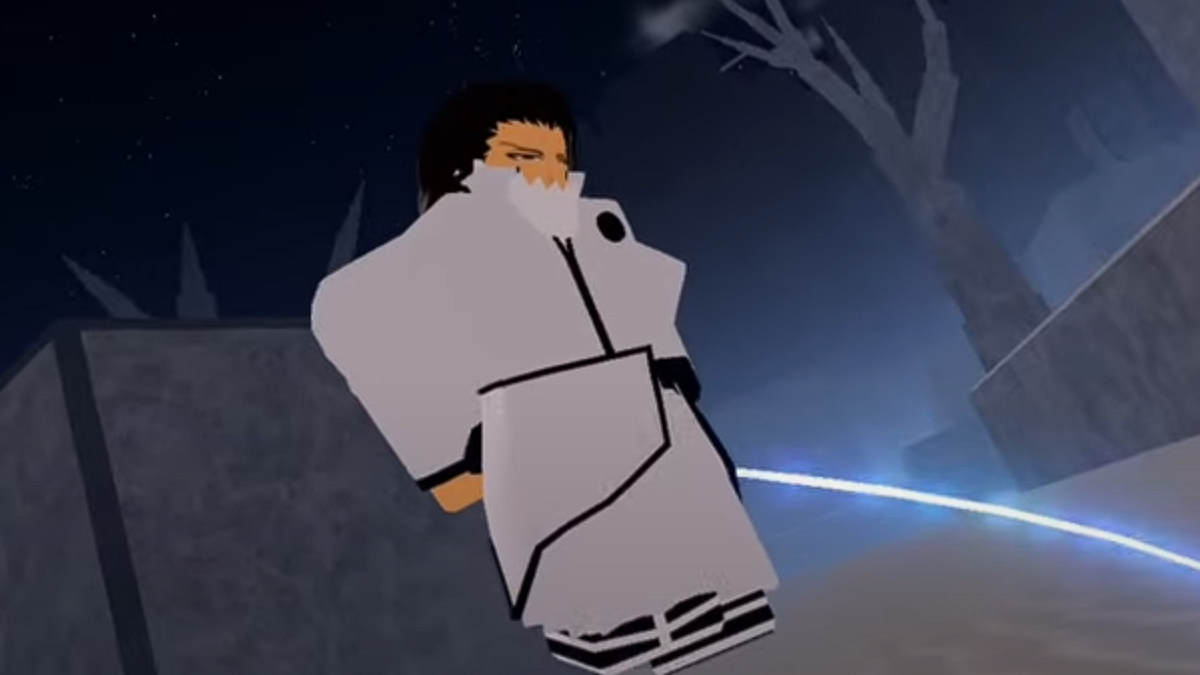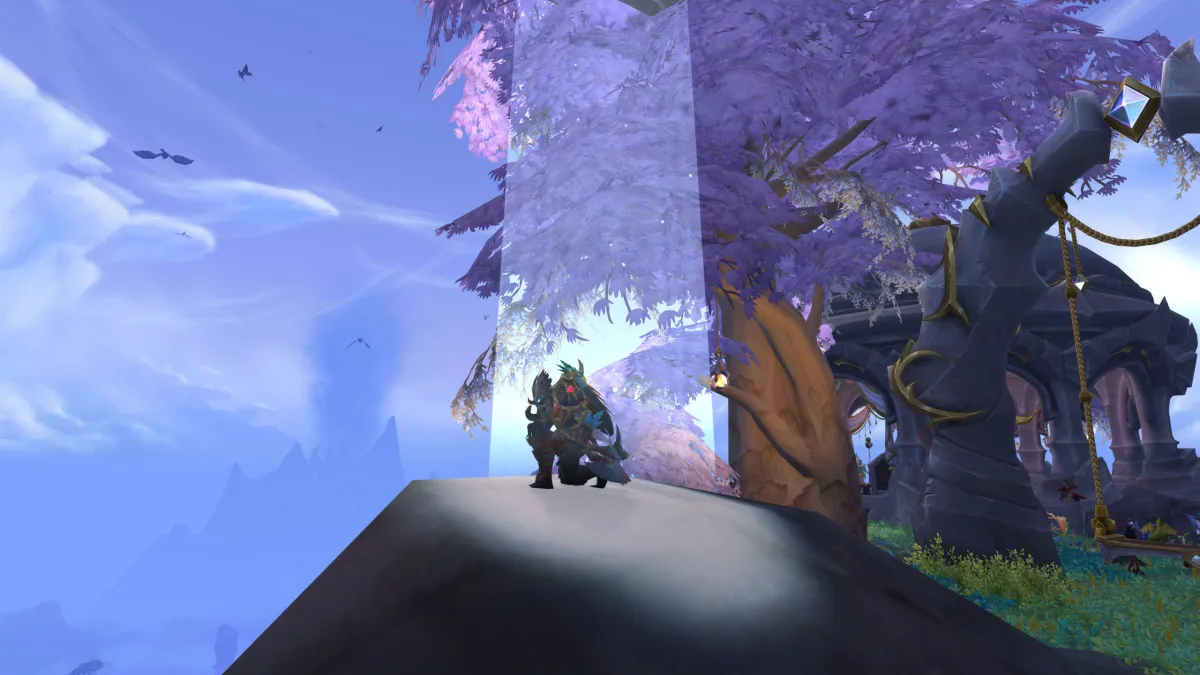Astlibra Revision is one of those “hidden gems” that I was advised to go into as blind as possible. To paraphrase, I was told to trust it would be worth my time to see it through to its conclusion. Now, three weeks and change later, I have finished Astlibra Revision. And while I don’t think that advice was totally necessary, I still don’t know how to begin describing the experience.
For lack of a better option, the best way to understand this game is to understand its creator. Astlibra was developed predominately by one Japanese developer who goes by the name “KEIZO”. From what I’ve gathered, KEIZO is not a professional game designer. So in addition to his full-time job, Astlibra was the passion project he worked on in his free time. In that sense, Astlibra isn’t unlike that one RPG Maker game you might have spent a month tinkering with. Except KEIZO kept working on Astlibra for 15 years, releasing chapters episodically until it was finished.
Astlibra Revision is the final version of that decade and a half of work, featuring some extra talent to help the game cross the finish line. This notably includes artwork from Shigatake, who worked on Vanillaware games like Muramasa: The Demon Blade and Dragon’s Crown.
Since its Steam release last year, Astlibra has developed a devoted cult following. Sporting an Overwhelmingly Positive rating on the platform, some have even gone as far as saying it was the best game of 2022. If nothing else, Astlibra represents an incredible amount of work on the part of its creator. I don’t know if I’d praise this one that much, but I can certainly say that it was an absolute trip, and I don’t regret taking that plunge.

Astlibra Revision (PC, Switch [reviewed])
Developer: KEIZO
Publisher: WhisperGames
Released: October 13, 2022 (PC), November 16, 2023 (Switch)
MSRP: $24.99
It’s about time
Astlibra begins like many RPGs you’ve certainly played. There is a boy (you), and there is a girl (your love interest). One day, demons attack your hometown, separating the boy who is never named and the girl. If you think the remainder of the plot will involve the boy embarking on a tireless quest to reunite with his childhood friend, you are correct.
Despite this, Astlibra takes some sharp-left narrative turns almost immediately. Following the attack on the village, the boy wakes up in a cabin miles away from civilization. Here, he meets a talking crow, and yes, talking crows are weird even in this fantasy universe. There’s an immediate sense of melancholy and intrigue that sets the stage for the rest of the plot. How did you get here? Where did this crow come from? Wouldn’t it be better to just try to have a happy life here, rather than risk your life pursuing this girl who most likely died?
Of course, as you might expect, the boy’s firm answer to that last question is “no”. And after setting out on a journey that lasts eight years, the boy and his crow become proper monster-slaying grown-ups who finally find other human settlements. And before you know it, the duo quickly get wrapped up in a plot that not only takes them across the world, but time itself.
This mixture of clichés and twists honestly describes Astlibra as a whole. The plot is something I want to discuss later, as there’s a lot to unpack here. But even when it comes to the gameplay, Astlibra proves that you shouldn’t judge a game based on appearances.
But what even is Astlibra?
As far as Astlibra’s general vibe goes, I can only describe it as a mix of a Vanillaware game like Muramasa and early Falcom games like Popful Mail. You might immediately look at screenshots and think “Metroidvania,” but Astlibra doesn’t quite fit that genre. Don’t get me wrong, there is some exploration here, and there are secrets to uncover. But actual platforming a la Blasphemous 2 or Symphony of the Night is basically non-existent.
Astlibra instead focuses heavily on its combat system, which feels quite good on the surface. Starting off, you’re just a guy with a stick hitting slimes. Even at this stage, you’ll notice that inflicting damage comes with a nice hit-stop that gives your strikes some weight without slowing the action down. Before long, you’ll gain access to the magic system, which lets you pause the action and input basic directional button commands to use special attacks that drain your Stamina gauge.
This is as much an offensive boon as it is a defensive one, as using magic gives you valuable invincibility frames. Timing your special moves well quickly becomes a core part of combat, especially as enemy projectiles start littering screens.
Despite starting on such a small scale, I can’t stress enough that the combat in Astlibra just keeps growing. With each chapter comes new magic, abilities, and entirely new attacks in your core move set. Even at the point you’d think the game would hit its mechanical peak, it still escalates. This is a good thing, because you’re going to need as many tools as you can get. Before long, you’ll find dungeons with ridiculous amounts of monsters and massive bosses that throw blankets of bullets at a moment’s notice.
That said, the game’s plethora of options quickly turns into a blessing and a curse.
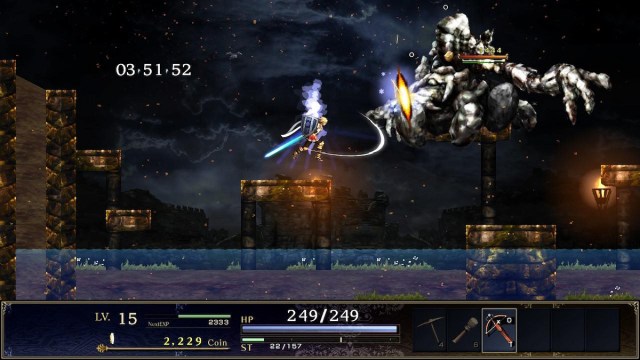
Prepare to grind
If there is one thing I cannot stress enough about Astlibra, it is that it is very much designed for people who enjoy grinding. If you want just about anything in Astlibra, you must work for it. I don’t necessarily think this is a bad thing, but it does make the game’s appeal very niche in practice.
For instance, take the game’s equipment. There are a ton of armaments you can equip, each different in terms of range, handling, power, and even elemental affinity. However, all equipment – armor and shields included – comes with skills you can master by earning enough EXP while using them. Some skills are duds, but others are basically essential. These include things like extending your invulnerability period after getting hit or boosting elemental damage. So to get the most of your character, you better like swapping equipment and filling up every bar you see.
However, you also must consider how you get equipment. Every area in the game comes with its own batch of things to buy, but you can’t just use money to get them. You also need a wide variety of monster materials from that respective area, which you almost certainly won’t get through standard play. So the rhythm of the game quickly becomes identifying the materials you need, farming them until you’re done, and then repeating the process until you’ve grinded out everything you can in an area.
And this isn’t even getting into how Astlibra encourages collecting every item thanks to its Libra system, the skill tree which uses six different currencies dropped by monsters, rare drops in each zone… the list goes on.
Playing on the Hard difficulty, I found all this grinding was absolutely necessary to get through the first half of the game. Because again, this isn’t just to make your numbers bigger; it’s the only way to fully unlock Astlibra‘s combat system. You could theoretically drop the difficulty and coast through the game without the grind. But I genuinely wonder if someone opting for this playstyle would really enjoy Astlibra.
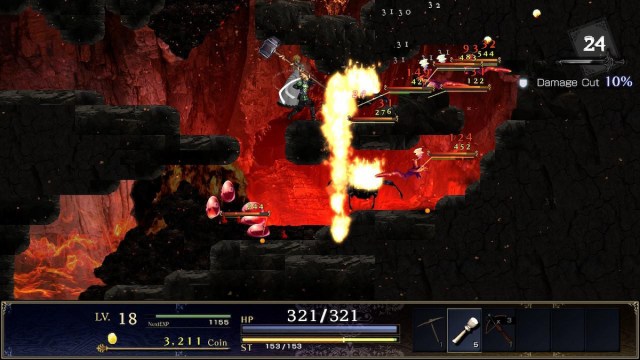
Make numbers go up
You wouldn’t think the existence of grinding would impact Astlibra’s combat on a philosophical level, but it totally does. As mentioned above, you’ll quickly find that the game loves littering monsters on every screen in front of you. And if your power level is high enough, you’re rewarded with an insane wave of positive feedback. Slaying huge groups comes with satisfying sounds and explosions of gold, items, and experience that really gets the dopamine going.
You know that feeling you get when you see that huge explosion of loot in an ARPG like Diablo? That’s what Astlibra has going for it.
The only problem with this approach is that combat starts to show cracks when you aren’t overpowering enemies. Those huge swarms of foes can easily overwhelm you, resulting in situations where you can go from full health to dead because enemy attacks lined up in a weird way. Additionally, the game’s frankly plain visual style doesn’t help matters, as enemies don’t telegraph their attacks super obviously. That last point is understandable given the game’s development. KEIZO frankly did an amazing job given what he was working with. That shortcoming just kind of comes with the territory.
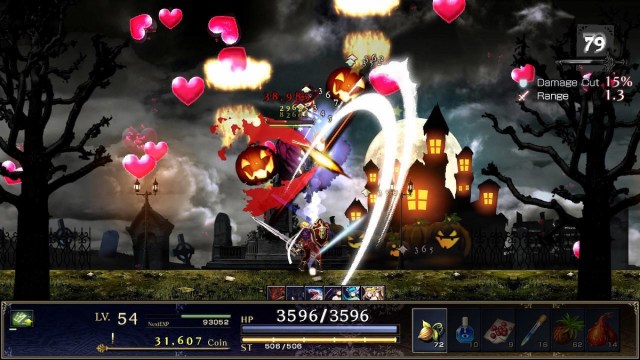
It gets better, though
With that established, one of the interesting things about Astlibra is that it gets tangibly better as you progress. As your hero’s capabilities keep growing, so too do enemies’. Boss battles, in particular showcase better design. These major encounters aren’t terribly impressive early on. But by the game’s midpoint, you start to see more clearly defined attack patterns and strategies that you can play around.
Combined with your hero’s continuous escalation of power, you eventually do find some fantastically fast and frenetic encounters. Inflicting huge damage with rapid-fire strikes while you time your magic spells just right feels really good. I’d go as far as to say it gave me that rush I typically get from Falcom’s Ys series. Do I think the game’s superior second half makes the game worthwhile for someone who just doesn’t like the first half? Not at all. But if you at least enjoy what Astlibra puts on the table early on, you have a nice payoff awaiting you.
On one hand, I do wish KEIZO would have maybe gone back and done more work on the early game to match the quality you’ll see later. On the other hand, I really enjoyed seeing KEIZO become more proficient as a developer as I played. It’s a unique vibe, and it’s only something I ever saw back when I was deep into RPG Maker games in a past life. I have no idea if that kind of thing matters to anyone else, but it did enhance my experience.
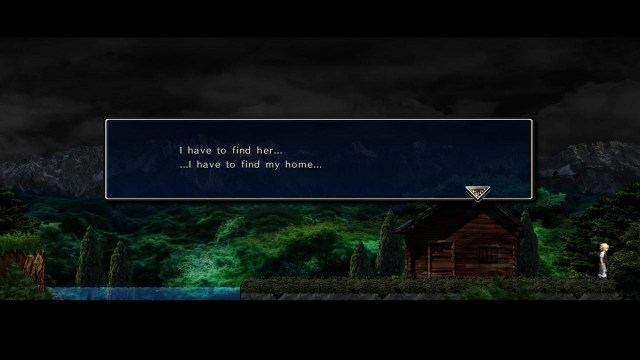
A story across time
Now, at this point I want to talk about Astlibra’s story, as it deserves to be unpacked and analyzed just as much as its gameplay. Don’t get me wrong; if you’re looking for the next game to change your life along the lines of Undertale or Rakuen or whatever your favorite indie game is, Astlibra probably isn’t it. That said, KEIZO really swings for the narrative fences and takes Astlibra to some interesting places.
In short, Astlibra is a game about time travel. That isn’t a spoiler; you’ll see the foundation for that laid very early on. But instead of diving right into a sweeping, grand tale, it instead explores isolated, episodic stories early on that I really liked. Even the game’s earliest chapters feature bittersweet, melancholic moments that still make me tear up a bit to remember. Astlibra does a really good job exploring “what if” scenarios, often not so much landing on a central thesis as it does ask interesting questions. What would you change if you could go back in time? And, perhaps more importantly, what would you sacrifice in that process?
It’s a game that really loves to play at your expectations, for better or for worse. I suspect that at certain points during development, people playing early chapters of Astlibra may have figured out certain twists early, which inspired KEIZO to come up with more subversive elements to keep players on their toes. I have no way to prove this beyond that being the vibe I got. But the result is something that isn’t always cohesive, but pretty interesting nonetheless. If you’re someone who values stories full of twists, you’ll like what Astlibra offers.
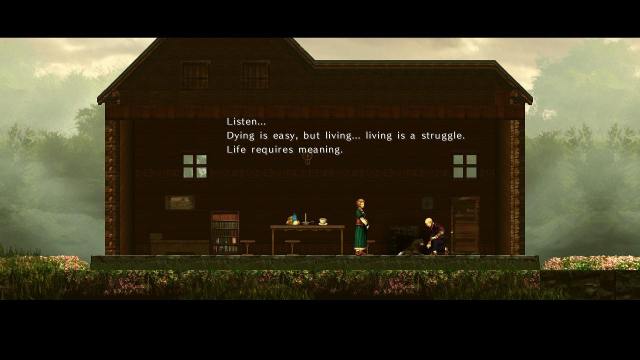
There’s no time like the present
If Astlibra’s narrative has one sore spot, it’s that it can get uncomfortably horny at points. Look, I went into Astlibra expecting to fight hot naked RPG gods and/or goddesses, and that’s certainly here. My gripe is that Astlibra’s lewd moments, whether you’re viewing them as humorous or titillating, just aren’t good. One chapter is especially egregious with this, often forcing risqué situations that actively broke my immersion with the episode’s main story. For lack of a better word, this makes me cringe, it’s embarrassing.
Horniness aside, Astlibra’s approach to storytelling does mean that its more interesting themes don’t get explored as much as they could. Around the game’s overall halfway point, things get crazy. It starts introducing concepts that individually could act as the central conflict for the remainder of the game’s run time, only to stop a bit short and move onto something else. This result in a story that’s fascinating to follow, but doesn’t end on as strong of a note.
That said, if I did have to sum up the overall meaning I gleaned from Astlibra as a whole, it’s that we’re all shaped by our hardships. Even if we could go back and change the past, we can’t erase the memories that informed that decision. There is, quite literally, no time like the present. And sometimes, we must face a future full of uncertainty and deal with the consequences as they come.
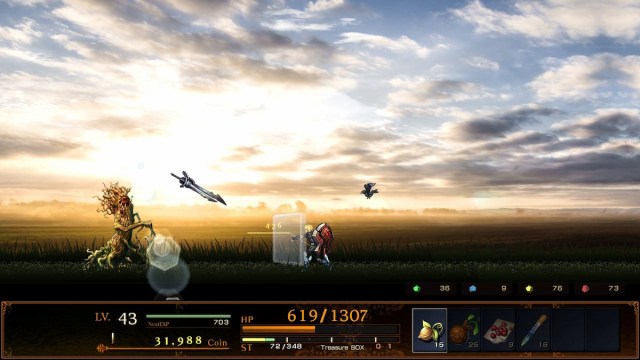
How does Astlibra Revision run on Switch?
Now, given that I’m playing the relatively new Nintendo Switch port of Astlibra, I’d be remiss if I didn’t talk about the quality of this version of the game. Overall, it’s pretty good! Everything generally runs at a smooth framerate, and the simple artstyle naturally looks just as good here as it does anywhere else. I can’t directly compare the game to its PC version, but the footage I’ve seen looks similar enough.
That said, it’s not quite perfect. Near the endgame, the game could suffer noticeable slowdown whenever the screen got excessively cluttered with enemies and projectiles. I also had at least one instance where some enemy graphics flat out didn’t load in one area, though this did correct itself later for reasons I don’t understand. Fortunately, these were incredibly rare issues all told. I’d say this impacted maybe 1% of my total playtime.
Honestly, I understand why Astlibra was ported to the Switch over the other options: it works particularly well as a handheld game. Grinding out materials to upgrade your skill tree and weapons works great in short bursts, especially if you’re looking for something to play while you catch up on some podcasts. The game is relatively punishing if you die, so it’s not quite a “turn your brain off” kind of grind. But I did like playing it in this context. Take that as you will.
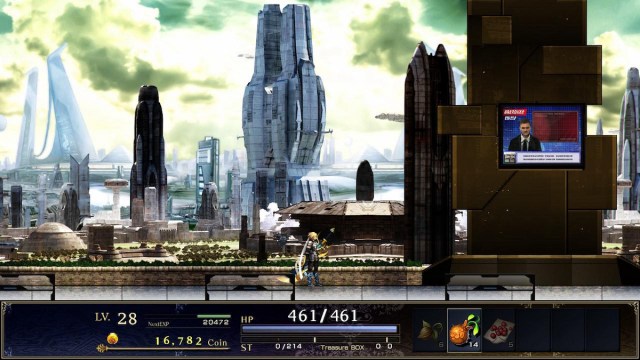
Weigh it on the scales
Astlibra Revision is one of the most interesting games I’ve played this year, and I can only conditionally recommend it. If you’re not the kind of person that enjoys grinding for materials and going for 100% completion, I don’t know how much you’d get out of the game. Additionally, Astlibra has enough jank across its many systems that I could probably fill another review nitpicking at it. These issues are understandable considering the game’s development, but they are issues regardless.
Yet when I look back the game in its entirety, I can’t help but feel utterly impressed by it. In both its story and its gameplay, Astlibra continuously aims higher than its solo-developer has any right to. And by some absolute miracle, it succeeds more often than it doesn’t. Once I reached the postgame content, I was almost sure I was done with the game and thought I could write my review already. Yet even at that point, it just kept growing, and it wound up hooking me for nearly 20 extra hours.
Despite all the game’s rough edges, that constant feeling of surprise ultimately nudged Astlibra into “Great” territory for me. At many points, I felt just as invested in the story on my screen as I was with the story of KEIZO creating it. Watching someone basically learn game design right in front of you is such a surreal experience, especially whenever you abruptly unlock new foundational combat mechanics that I imagine KEIZO just wanted to add on a whim. It’s a game that can, on occasion, be weird and baffling in ways that few commercial games are. But it’s nonetheless overflowing with passion, and I can’t help but feel impressed by that.
Astlibra Revision asks a lot from players upfront. It’s very much built for those who like grindy games, and it’s unpolished in ways that you’d expect from a title created by one person. But if you can enjoy what the game puts on the table, you’ll find an engaging combat system and a captivating, if not occasionally bizarre story. It’s an acquired taste for sure, but for those with the right palate, Astlibra is a one-of-a-kind experience.
[This review is based on a retail build of the game provided by the publisher.]
